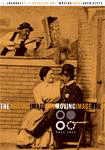
Moving Image
Scope & Guideline
Decoding the Language of Visual Arts
Introduction
Aims and Scopes
- Audiovisual Archiving and Preservation:
The journal places significant emphasis on the methodologies and practices surrounding the preservation of film and audiovisual materials. It covers topics related to film cleaning, digital archiving, and the challenges faced by archivists in maintaining historical integrity while adapting to new technologies. - Cultural and Historical Contexts of Film:
'Moving Image' explores film within its broader cultural and historical contexts, examining how films reflect and shape societal values, identities, and narratives. This includes the study of transnational cinema, amateur film histories, and the impact of political scenarios on film production. - Experimental and Non-Traditional Film Practices:
The journal is dedicated to analyzing experimental films and non-traditional film practices, including participatory cultures and immersive media. It seeks to understand how these forms of cinema interact with audience experiences and the evolving landscape of media consumption. - Feminist and Gender Perspectives in Film:
A consistent focus on feminist theory and gender studies is evident, with discussions surrounding materiality in film, feminist film practices, and the representation of women in cinema, contributing to a more nuanced understanding of gender dynamics in the film industry. - Engagement with Contemporary Issues:
The journal addresses contemporary issues related to film and media, such as piracy, copyright, and the implications of digital media on archival access. This reflects a commitment to keeping the discourse relevant to current challenges in the field.
Trending and Emerging
- Activating the Archive:
A significant trend is the exploration of 'activating the archive', which emphasizes the importance of engaging with archival materials to uncover hidden narratives and facilitate public discourse. This theme highlights the role of archives in shaping collective memory and identity. - Transnational and Exile Cinemas:
There is an increasing interest in transnational cinema and the experiences of exile cinema, examining how these films address displacement and identity. This trend reflects a broader engagement with global cinema and its implications for understanding migration and cultural exchange. - Cultural Policy and Film Heritage:
Emerging discussions around cultural policy and the capabilities approach in relation to film heritage suggest a growing recognition of the need for systemic support for film preservation and accessibility, addressing the intersection of policy, culture, and film. - Participatory and Immersive Media:
The journal is increasingly focusing on participatory film cultures and immersive media experiences, recognizing the changing landscape of audience engagement and the impact of technology on cinematic experiences. - Feminism and Material Culture in Film:
The exploration of feminism in relation to film materiality is gaining traction, with a growing body of work that examines how material aspects of film influence representations of gender and power dynamics in cinema.
Declining or Waning
- Traditional Film Criticism:
There appears to be a waning interest in traditional film criticism, which often focuses on aesthetic evaluations of mainstream cinema. The journal has shifted towards more interdisciplinary approaches that engage with socio-political contexts and archival practices. - Mainstream Film History:
The coverage of mainstream film history, particularly the analysis of popular films without a critical lens, is less prevalent compared to the exploration of niche or marginalized narratives in cinema. This indicates a move towards examining films that challenge dominant cultural narratives. - Purely Technical Aspects of Filmmaking:
While technical discussions remain relevant, there is a noticeable decline in papers focused solely on the technical aspects of filmmaking, such as cinematography or editing techniques. The journal now favors discussions that integrate technical analysis with cultural critique. - Historical Figures Without Contextual Analysis:
There is a reduced focus on historical figures in film without sufficient contextual analysis. Contributions now tend to emphasize the socio-cultural impact and implications of these figures rather than merely recounting their biographies.
Similar Journals
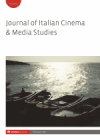
Journal of Italian Cinema and Media Studies
Advancing Critical Discourse in Italian Media StudiesThe Journal of Italian Cinema and Media Studies, published by INTELLECT LTD, is a premier academic journal dedicated to the exploration and critical analysis of Italian cinema and media. Since its inception in 2013, the journal has contributed significantly to the discourse surrounding the intersections of film, culture, and society, making it a vital resource for researchers and professionals alike. With an impressive span of converged years through 2024 and categorized in various quartiles, such as a Q1 ranking in Visual Arts and Performing Arts, the journal stands out in its field. Although it does not currently offer open access, the rigorous scholarship it publishes is accessible to a wide audience, contributing to ongoing dialogues in communication and cultural studies. The journal's impact is further reflected in its Scopus rankings, positioning it within the 64th percentile in Visual Arts and Performing Arts and the 21st percentile in Communication. As a critical avenue for scholarly exchange and creative inquiry, the Journal of Italian Cinema and Media Studies is essential for anyone engaged in the study of media, culture, and the arts.

Journal of African Cinemas
Connecting Cultures Through the Lens of African CinemaJournal of African Cinemas is a pioneering publication dedicated to exploring the dynamic field of African cinema and its cultural impacts. Published by INTELLECT LTD in the United Kingdom, this journal serves as a crucial platform for researchers, filmmakers, and students interested in understanding the complexities of film within the African context. With ISSN 1754-9221 and E-ISSN 1754-923X, the journal focuses on various aspects of cinema, including theory, production, and reception, highlighting the rich tapestry of storytelling from the African continent. Despite being classified in Q4 in Communication and Q3 in Cultural Studies and Visual Arts & Performing Arts for 2023, it stands out by capturing the multifaceted identities and experiences portrayed in African films. Engaging with a diverse array of interdisciplinary topics, the Journal of African Cinemas invites contributions that foster critical discourse and promote a deeper understanding of the unique aesthetic and social narratives present in African filmmaking. As it converges into a significant scholarly resource from 2017 to 2023, this journal is an essential read for anyone invested in the intersection of culture and cinema.
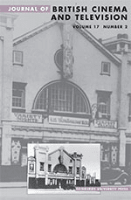
Journal of British Cinema and Television
Engaging with the Pulse of British Visual CultureJournal of British Cinema and Television, published by Edinburgh University Press, is a leading academic journal that explores the dynamic interplay between British cinema and television within the context of cultural studies. With an ISSN of 1743-4521 and E-ISSN of 1755-1714, this journal provides a platform for scholarly discourse, enabling researchers, professionals, and students to engage with critical analyses of screen media and its socio-political impact. As a Q3 journal in Communication and a Q1 journal in Visual Arts and Performing Arts for 2023, it occupies an influential position, particularly in the Arts and Humanities, where it ranks in the 90th percentile. The journal's scope encompasses a wide range of topics, from historical perspectives to contemporary practices in British visual culture, making it essential reading for anyone interested in the evolution and significance of screen studies in the UK. While it is not an open-access publication, the rigorous peer-review process ensures high academic standards and contributes to its esteemed reputation in the field. As it continues to converge from 2004 to 2024, the Journal of British Cinema and Television remains a vital resource for those seeking to deepen their understanding of British media and its global resonance.
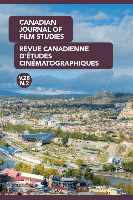
Canadian Journal of Film Studies-Revue Canadienne d Etudes Cinematographiques
Charting New Territories in Film ResearchCanadian Journal of Film Studies-Revue Canadienne d'Études Cinématographiques is a distinguished publication dedicated to the exploration of film studies within the context of Canadian cinema and global visual arts. Published by University of Toronto Press Inc., this journal offers a platform for innovative and critical scholarship, having achieved a notable Q2 ranking in the Visual Arts and Performing Arts category for 2023, with an impressive Scopus rank of 207 out of 667, positioning it in the 68th percentile among peers. With a continuous publication record since its established years from 1998 to 2001 and 2004 to 2024, it has become an essential resource for researchers, professionals, and students interested in the evolving landscape of film and cinema. The journal not only addresses theoretical perspectives but also engages with contemporary practices, thereby fostering a deeper understanding of cinematic arts. Despite not offering open access, it remains a vital repository of knowledge for those seeking to advance their studies and contribute to the discourse in film studies.

Asian Cinema
Advancing Scholarly Dialogue in Asian Film StudiesAsian Cinema is a distinguished academic journal dedicated to exploring the vibrant landscape of cinema across Asia, published by INTELLECT LTD, a recognized name in scholarly publishing. With its ISSN 1059-440X and E-ISSN 2049-6710, this journal has carved a niche within the realms of Communication and Visual Arts and Performing Arts, holding a 2023 Q4 ranking in Communication and a more favorable Q2 ranking in Visual Arts and Performing Arts. Operating out of the UK, specifically at THE MILL, PARNALL RD, BRISTOL BS16 3JG, ENGLAND, Asian Cinema provides a platform for interdisciplinary dialogues, critiques, and analyses that contribute significantly to the understanding of cinema as a cultural artifact. Acknowledged for its robust contribution to scholarly research, the journal commands a Scopus rank of 151 out of 667 in Visual Arts and Performing Arts, placing it in the 77th percentile, while achieving a 366 out of 511 rank in Communication, reflecting its ongoing relevance in the field. Although it operates under a traditional access model, Asian Cinema remains vital for researchers, professionals, and students alike, enriching academic discourse and providing valuable insights into the rapidly evolving cinematic practices across Asia.
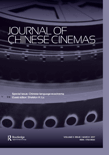
Journal of Chinese Cinemas
Unveiling the Stories Behind China's Silver ScreenThe Journal of Chinese Cinemas, published by Routledge Journals, Taylor & Francis Ltd, is a leading platform dedicated to advancing the field of film studies with a focus on cinema from China. With an ISSN of 1750-8061 and an E-ISSN of 1750-807X, this journal provides a comprehensive examination of the cultural, social, and political dynamics inherent in Chinese cinema. Ranked in the Q3 category for Communication and Q1 for Visual Arts and Performing Arts in 2023, it stands out in the academic landscape, particularly noted for its innovative research and diverse discourse. It holds a respectable position in Scopus rankings, coming in at #219 within Visual Arts and Performing Arts, indicating its growing impact among scholars and practitioners alike. With its commitment to publishing high-quality research from 2012 onwards, the journal serves as an essential resource for researchers, professionals, and students eager to deepen their understanding of the evolving landscape of Chinese cinema.

Transnational Screens
Illuminating Transnational Narratives in Visual CultureTransnational Screens is a premier academic journal published by Taylor & Francis Ltd, focusing on the dynamic intersections of visual arts, performing arts, and communication in a globalized context. Since its inception, the journal has garnered significant recognition, featuring in the Q1 category for Visual Arts and Performing Arts and Q3 for Communication as of 2023, reflecting its influential contributions to these fields. With a Scopus ranking placing it in the 78th percentile in Visual Arts and Performing Arts, this journal serves as a vital platform for researchers, professionals, and students aiming to explore the implications of transnational narratives in contemporary media and artistic practices. The journal is accessible to a diverse readership and promotes open dialogue through its commitment to publishing innovative and interdisciplinary research from 2020 to 2024. As a key resource for understanding the complexities of transnational screens, it invites submissions that push the boundaries of traditional scholarship and engage with pressing global issues through the lens of the visual and performing arts.

Studies in Australasian Cinema
Illuminating Cinema Through an Australasian LensStudies in Australasian Cinema is a premier scholarly journal published by ROUTLEDGE JOURNALS, TAYLOR & FRANCIS LTD, dedicated to the exploration of film and cinema within the Australasian context. With an ISSN of 1750-3175 and an E-ISSN of 1750-3183, this journal provides a vital platform for researchers, professionals, and students in the fields of Visual Arts and Performing Arts and Communication. Notably, it holds a prominent Q1 rank in Visual Arts and Performing Arts, reflecting its impact within the academic community. Although it is not an open access journal, its rigorous peer-review process ensures the highest quality of published research. Since its inception in 2007, Studies in Australasian Cinema has continued to contribute significantly to discourse surrounding film theory, criticism, and production, making it an essential read for anyone interested in the evolving landscape of Australasian cinema.

Jewish Film & New Media-An International Journal
Illuminating Jewish Identity Through Film and Media NarrativesJewish Film & New Media: An International Journal, published by Wayne State University Press, serves as a crucial platform for scholars and practitioners within the realms of Film Studies, Jewish Studies, and Media Studies. Since its inception, the journal has explored the intersection between Jewish culture and cinematic representation while also addressing contemporary media narratives. With an ISSN of 2169-0324 and E-ISSN 2169-0332, it is indexed in major databases, showcasing solid rankings in various disciplines, including a commendable Q2 rank in Visual Arts and Performing Arts. Despite its current Q4 categorizations in Anthropology and Communication, the journal is noted for its engaging contributions that sow rich discussions about Jewish identity, filmic expression, and media representation. Researchers and students alike benefit from the journal’s wealth of interdisciplinary scholarship, which spans converged years from 2013 to 2017 and 2019 to 2022, ensuring a robust timeline of critical inquiry. As an essential resource for understanding the nuances of Jewish film and new media, this journal occupies a unique niche, inviting contributions that push the boundaries of current academic dialogue.
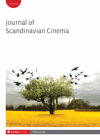
Journal of Scandinavian Cinema
Advancing Interdisciplinary Insights in Film StudiesThe Journal of Scandinavian Cinema, established in 2014 and published by INTELLECT LTD, serves as a premier platform dedicated to the interdisciplinary field of film studies with a specific focus on Scandinavian cinema. With an impressive Q2 category ranking in Visual Arts and Performing Arts for 2023, and a Scopus rank placing it in the top 62nd percentile of its category, this journal is instrumental in advancing scholarly dialogue within the arts community. The journal strives to explore and critique cinematic expressions from the Nordic countries, contributing to a nuanced understanding of cultural narratives and filmic innovations. Committed to fostering accessibility and engagement, it caters to a diverse audience including researchers, professionals, and students keen to delve into the artistic, cultural, and political dimensions of cinema. The Journal of Scandinavian Cinema is essential for anyone interested in the evolution and impact of film in the Scandinavian context, promising rich insights and a robust collection of scholarly articles.